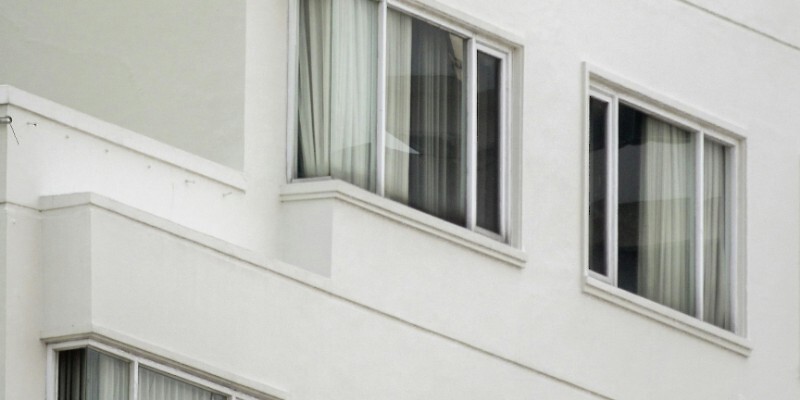Multi-unit freehold blocks (MUFBs) are properties comprising multiple distinct residential units, all contained within a single freehold title.
These types of properties can provide landlords with greater income security and competitive rental yields. But what mortgage options are available for them? Discover more here.
What is a multi-unit freehold block (MUFB) mortgage?
A multi-unit freehold block (MUFB) mortgage is a specialised loan designed for landlords purchasing multiple residential units situated on a single site under one freehold title.
Each unit typically has an individual assured shorthold tenancy (AST) agreement, private living spaces for residents, separate entrances for each household, and, in some cases, shared communal areas.
Essentially, this type of mortgage is a tailored buy-to-let product suited to properties meeting MUFB criteria. Examples of such properties include:
- An entire block of flats
- Properties converted into multiple flats
- Several houses located on one site under a single freehold
While MUFB mortgages offer significant benefits to landlords, they can be more intricate to arrange. Consulting an experienced mortgage broker is strongly advised to navigate the complexities.
Lending criteria for MUFB mortgages
Lenders offering multi-unit freehold block (MUFB) mortgages typically enforce strict eligibility criteria for both the property and the applicant. Key requirements often include:
- Number of properties under one title: Most lenders allow between 6 and 10 units on a single freehold, though some may extend this to 30 or more.
- Unit size: Many lenders impose minimum size requirements for individual units, often ranging from 6 to 40 square metres. However, certain providers have no minimum size criteria.
- Lease term: Some lenders will only approve an MUFB mortgage if the property’s lease has at least 100 years remaining.
- Deposit requirements: Typically, a deposit of 20–25% of the total value of the MUFB is required (equating to 75–80% LTV), though some lenders may accept lower deposits.
- Landlord experience: Given the specialist nature and potentially higher risks of MUFBs, many lenders prefer applicants with prior landlord experience. However, a few may consider first-time landlords.
- Construction type: Non-standard construction may limit the range of lenders willing to offer an MUFB mortgage. Consult our detailed guide for more information on this aspect.
- General application strength: A strong application is crucial. Factors such as clean credit history, an age below 75 at the end of the mortgage term, and sufficient proof of rental income can significantly improve your chances of approval.
Meeting these criteria can enhance the likelihood of securing an MUFB mortgage, but professional advice is often essential to navigate the process effectively.
How to get a multi-unit freehold block mortgage
For a highly specialised mortgage such as a multi-unit freehold block (MUFB) mortgage, it is advisable to begin by consulting a broker with expertise in this area.
They will guide you through the steps below, leading up to full application:
- Obtaining rental income projections and yield forecasts: Ensuring you have a clear understanding of the property’s potential financial returns.
- Preparing a business plan (if required): Helping you compile a professional plan to meet lender requirements.
- Identifying the ideal lender and deal: Matching you with lenders and offers that align with your circumstances and the property in question.
- Recommending multi-property insurance plans: Advising on suitable insurance coverage to protect your investment.
Engaging with a knowledgeable broker early in the process can save time and improve your chances of securing the best possible mortgage deal for your MUFB property.
Which mortgage lenders are available?
Multi-unit freehold block (MUFB) mortgages are primarily offered by specialist buy-to-let lenders. Below are some examples of providers and their specific criteria:
- Bath Building Society: Offers MUFB mortgages as part of its House in Multiple Occupation (HMO) product range.
- Vida Homeloans: Considers MUFB properties, provided no leases have been granted for any of the individual units.
- Kensington Mortgages: Offers MUFB mortgages, except for properties located in Northern Ireland.
- Landbay: Provides competitive deals for MUFB mortgages, prioritising landlords with at least 12 months of experience.
- Kent Reliance: Lends on MUFBs with up to 10 flats under a single freehold title.
These are just a few examples of the lenders available. For a comprehensive overview of your options and guidance on selecting the most suitable provider, we recommend consulting with an expert broker. They can tailor advice to your specific circumstances and property type.
Are the rates higher for multi-unit freehold block mortgages?
Interest rates for multi-unit freehold block (MUFB) mortgages can be higher than those for standard buy-to-let (BTL) mortgages, but the difference is not always significant. With a substantial deposit, sufficient landlord experience, and a property that meets typical MUFB criteria, it is often possible to secure a rate comparable to standard BTL mortgages.
Working with a specialist broker can help identify competitive rates tailored to your circumstances.
Frequently Asked Questions
The primary distinction between multi-unit freehold blocks (MUFBs) and houses in multiple occupation (HMOs) lies in the layout and tenancy structure. Each unit within an MUFB is self-contained, featuring its own entrance and individual assured shorthold tenancy (AST). In contrast, HMO properties typically involve shared facilities, such as kitchens and bathrooms, among tenants.
While managing multiple ASTs may initially appear more complex compared to overseeing a single agreement, MUFB properties often yield higher profitability. For many landlords, the increased returns make the additional management efforts worthwhile.
















